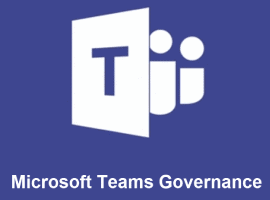Microsoft Power Platforms no/low code tools are widely used by many organizations to transform their business processes digitally. However, we often see partners who struggle with their first projects or trials, or who face major challenges because they only focus on initial implementations without a wider strategy and governance in place.
These are usually the result of five frequent errors. I’ll tell you what they are so you can prevent them in your organization.

#1 Sailing with no destination in mind
Imagine a ship wandering without a set course. It’s destined for trouble, right?
The same applies to your organization’s no/low-code journey. Without a clear vision and direction, your project is destined to fail. Simply hopping on the no-code bandwagon because it’s trendy will most likely result in wasted resources. Initiatives will be halted, leading to decreased team morale.
How to prevent this? Define SMART goals from the outset: Specific, Measurable, Achievable, Realistic, and Time-related. This way, the entire team knows which direction to sail. Ideally, the board ensures that the wind is blowing from the right direction and that there is a competent captain on board.

#2 Employees are not adopting
When users hate a tool, there will be zero adoption. Not adopting is not a reason for failure, it’s a consequence.
There are several ways to avoid poor adoption.
- First, as an organization, invest in the skill building of your employees. Give them time to upskill themselves. Don’t expect them to do this in their spare time as an additional extra on top of their daily workload.
- Additionally, ensure that learning is not just a solo activity with videos and self-study packages, but also provide peer support (via, for example, a Microsoft Teams group) or organize collaborative learning (during live webinars or training sessions).
- Finally, consider implementing a reward system that provides little motivation for employees.
When you start implementing these best practices, you’ll move from a situation where nobody cares about low code to an environment where everyone will love it.

#3 Chaos
A third reason why organizations’ no/low code journey runs into turbulent waters is when the necessary governance and security measures are underestimated at the outset.
We’ve encountered situations where the previous risk of low user adoption was not a problem. Instead, there was a sudden increase in citizen developers and more than 100 power apps in use. Without proper management and maintenance, this can cause alarm when an app stops working. A bigger risk of insufficient policy and governance is that it creates an opportunity for potential security threats. You are behaving very unprofessionally as an organization if you cannot ensure that the personal contact information, medical data, or banking details of your employees or customers will never be exposed.
How to prevent this? Before embarking on your low-code journey or during the initial startup phase, it is advisable to establish and define a Center of Excellence. This allows your organization to invest in organic growth while maintaining governance and control. If you lack the necessary experience in-house, it may be advisable to collaborate with an external partner for this. Despite the initial additional cost, doing so can help avoid many future risks (and costs).

#4 Killing any innovation
But we don’t want to scare you too much with the last pitfall, because the other extreme can also hurt innovation. We’ve seen many organizations ruin their low-code, no-code efforts by spending too much on fancy presentations and complicated processes.

#5 Wrong people hosting the party
No/low code is not just an IT issue, and it’s not only a business concern. It’s about cooperation—a joint effort between IT and business. They need to have harmony, coordination, and dialogue that enhance each other and function together smoothly.
So, it’s crucial that no stakeholders are left out. Let’s revisit the sailing ship metaphor we mentioned at the beginning of this blog. It’s essential to have the right people, with the appropriate mandates from both business and IT, on board—including buy-in from top management and the board—to successfully drive digital innovation.
Make your no/low code program succeed!
These were already 5 top failure reasons that, according to me, you can avoid at the start or during the further rollout of low code development by citizen developers within your organization.
Of course, these risks can be further refined depending on:
- your company size
- your reliance on technology
- the industry you work in
- … and numerous other factors.
I wish you success with your no/low code programs. Don’t hesitate to contact me to discuss the current stage of your organization’s journey and how you can successfully tackle the associated challenges.
About the Author:

Hi, I’m Jonas Wauters, Recognized Solution Architect at Appfie.
It’s my mission to unlock the potential within every individual and organization, transforming lives and businesses through the strategic application of innovative technology and AI. I believe in positivity, trust, honesty, and simplicity, striving to improve myself and others while focusing on clear and genuine interactions.
Webinar:
🎬 Watch also the webinar ‘The top reasons 75% of Low/No-Code programs fail and how to make yours succeed!’, hosted by Jonas Wauters.









